Have you always wanted to visit Falkland Islands? The Falkland Islands (also known as Islas Malvinas) are a place of wonder and peaceful ambiance surrounded only by the eternal blue swelling of ocean water.
A variety of wildlife call these islands home, and they can be seen happily frolicking on the rocky shores.
The Islands are also a place of great historical significance, being settled by many different groups over the years. It is a place where many settlers have come to lay claim, and visitors travel to experience its untamed charm.

Today, the Falklands are known for their unspoiled beauty and friendly residents. There are tons of things to do in the Falkland Islands, and we’ve compiled a list of our favorites for you!
Be sure to add Falkland Islands to your bucket list, it is an experience you will never forget.
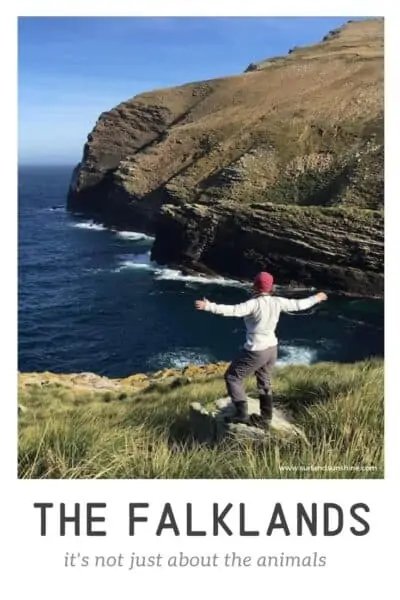
Where are the Falkland Islands?
In the waves of the Atlantic ocean, some 3,000 miles north of Antarctica is an archipelago standing strong against the frigid battering of the sea, defiant in its wild beauty.
The Falklands consist of two main islands in the archipelago with a cluster of 778 surrounding islands.
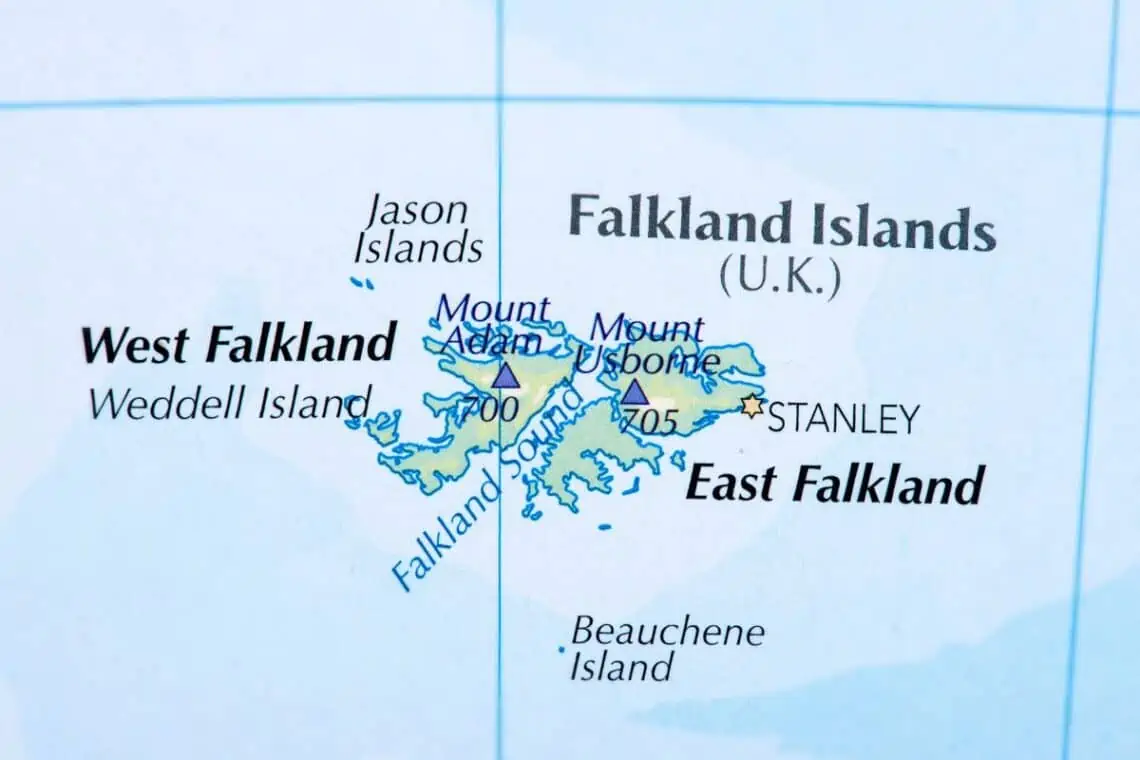
The two main islands are known as East and West Falkland.
Why Visit Falkland Islands?
The Falkland Islands are a place of unblemished beauty and scientific significance in both geology and wildlife.
It is a peaceful community built upon the hard work of generations, and the continued work of present generations determined to keep the Islands strong, sufficient, and in their natural state.
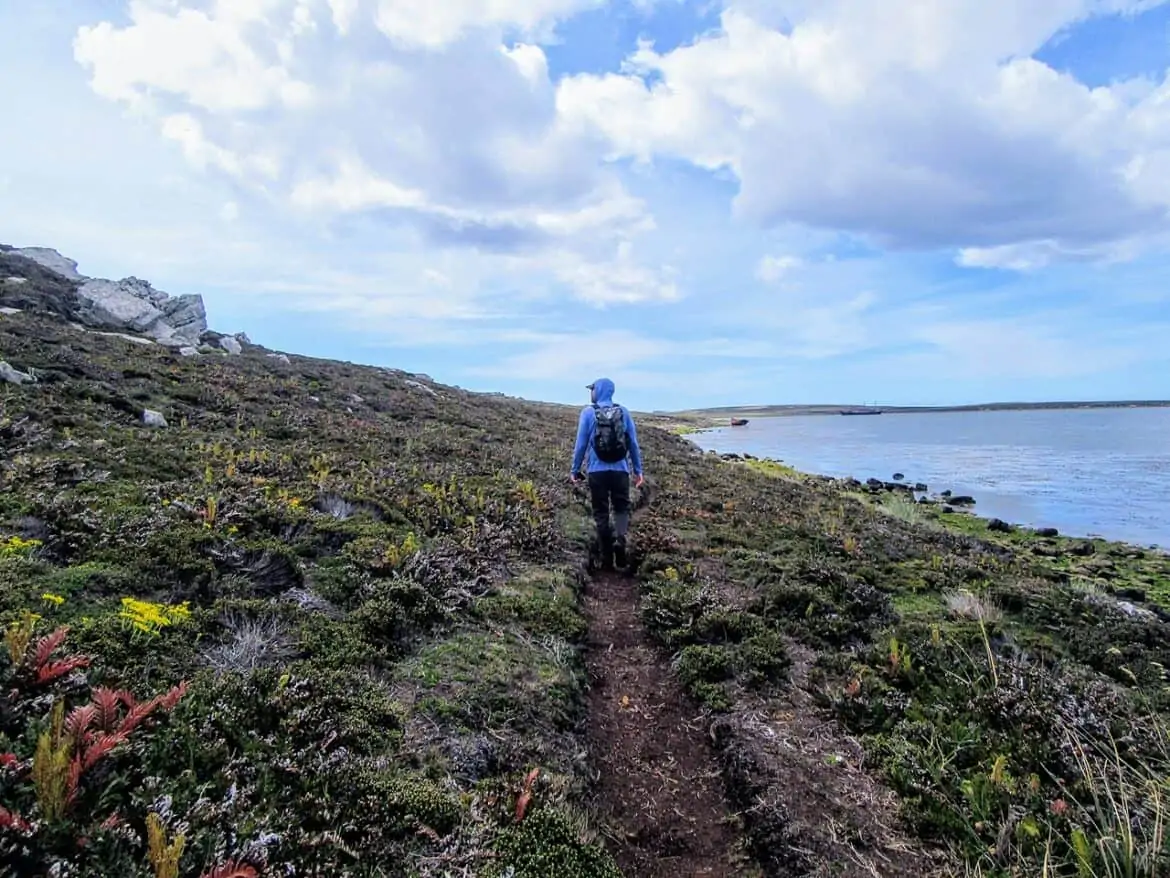
Falkland Islands Flag
The flag of the Falkland Islands was adopted on January 25, 1999. The design consists of a blue ensign with the Union Jack in the canton and a Falkland Islands coat of arms in the fly.
The arms consists of a golden lion rampant on a field of red, flanked by two sheep. Above the shield is a ship in full sail, representing the journeys of discovery made by early explorers to the islands. The motto “Desire the Right” is also included in the design.
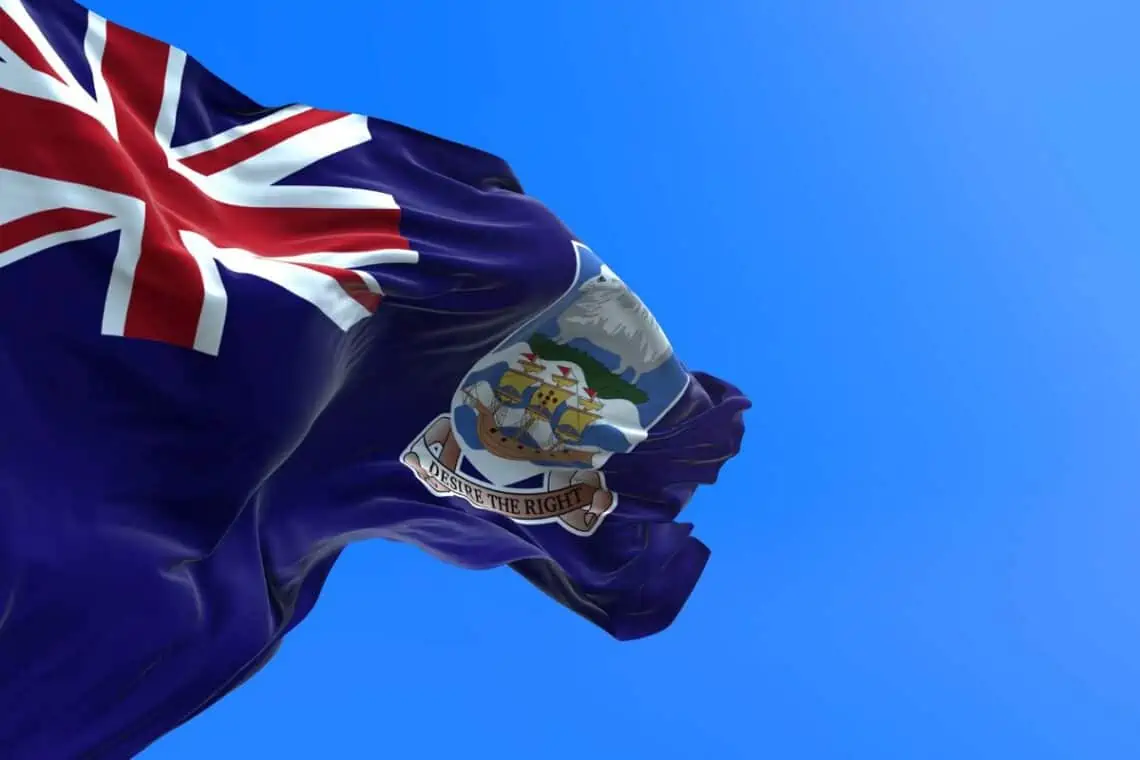
The use of the Union Flag in the canton shows the Falkland Islands’ connection to the United Kingdom, while the blue background represents the ocean surrounding the islands.
The flag is used as both a national and territorial flag and is flown on all official buildings and vessels. It is also widely used by Falkland Islanders as a way to show their pride in their country.
Falkland Islands Weather
The Falkland Islands have a cold, maritime climate, similar to that of southern Chile. The weather is highly variable, and strong winds are common. Average temperatures range from 45°F to 51°F, with occasional extremes. January and February are the coldest months, while December is the warmest.
Precipitation is heavy, averaging around 30 inches per year. Snowfall is frequent during the winter months, but rarely sticks around for long. The Falkland Islands are located in the path of frequent storms, and high winds are a common occurrence.
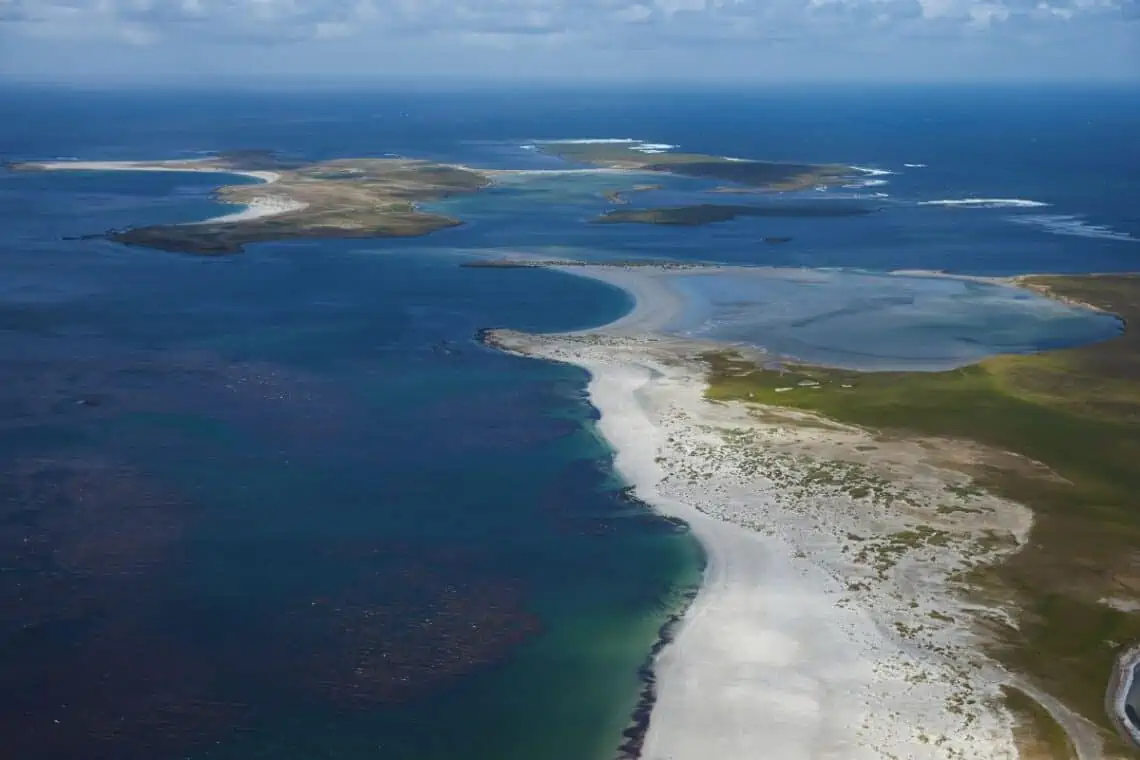
Despite its remote location, the Falkland Islands enjoy a relatively mild climate, thanks to the warming effects of the Gulf Stream. However, visitors should be prepared for sudden changes in weather conditions. The weather can be unpredictable, and strong winds are not uncommon.
In general, the best time to visit the Falklands is between November and March, when the weather is usually at its finest. Of course, even during this time of year, visitors should be prepared for sudden changes in the weather.
Things to Do on the Falkland Islands
There are tons of things to do on the Falkland Islands aside from wildlife viewing including hiking, fishing, kayaking, climbing and mountain biking.
Popping into a pub is also a must as the people of Falkland Islands are some of the most hospitable you will ever meet!
Port Stanley Falkland Islands
On the East Island is the capital of Stanley, the southernmost British outpost in the world. This is where most of the population lives.
With less the 3,000 people on the Islands, it is a place of strong community where many lineages can be traced back nine generations.
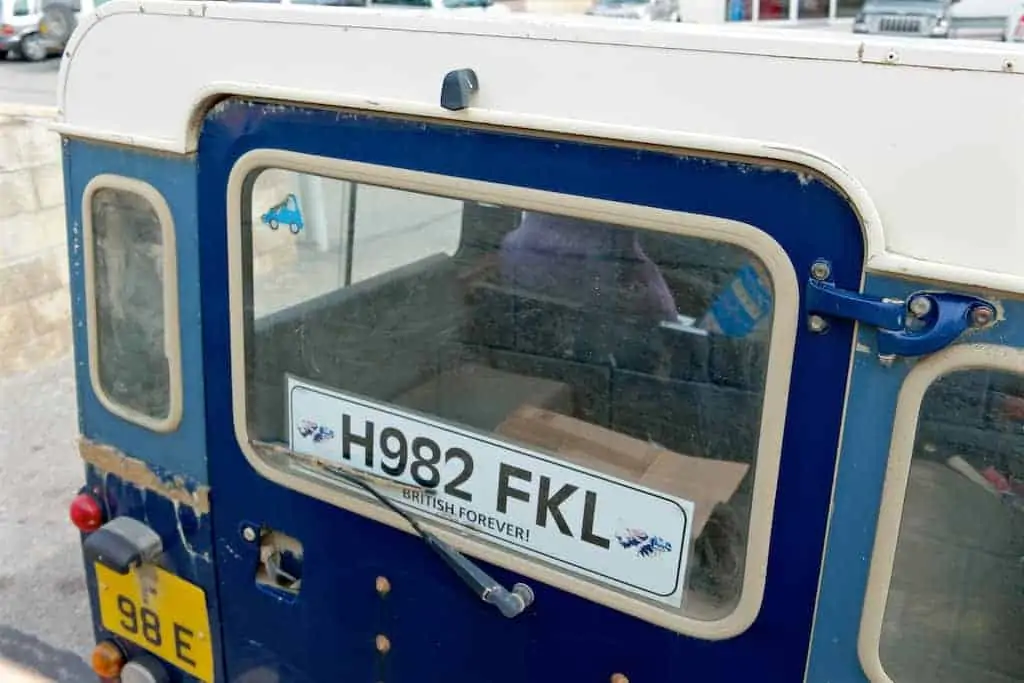
The Islands were first claimed in 1765 by Britain, but over time there were also French and Spanish settlements.
However, in 1832 Argentine forces invaded for three months before being forced out by the Royal Navy.
The Islands continued to grow and established Stanley as the capital of the Falkland Islands.
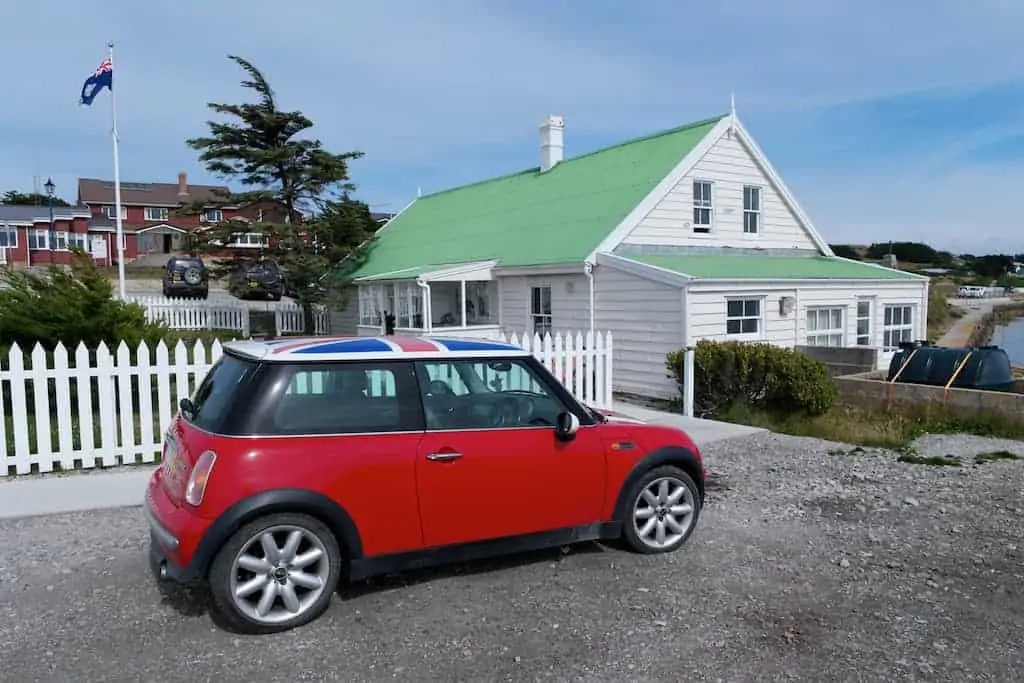
It was a peaceful but sufficient existence until 1982 when Argentina invaded once again and occupied the Islands for over seventy days.
The British troops liberated the islands during the Falklands war, but sadly almost 1,000 lives were lost in the battle.
It’s clear to anyone who visits nowadays that the residents of the islands are a proud British overseas territory, displaying flags and other symbols of nationalism at every opportunity.
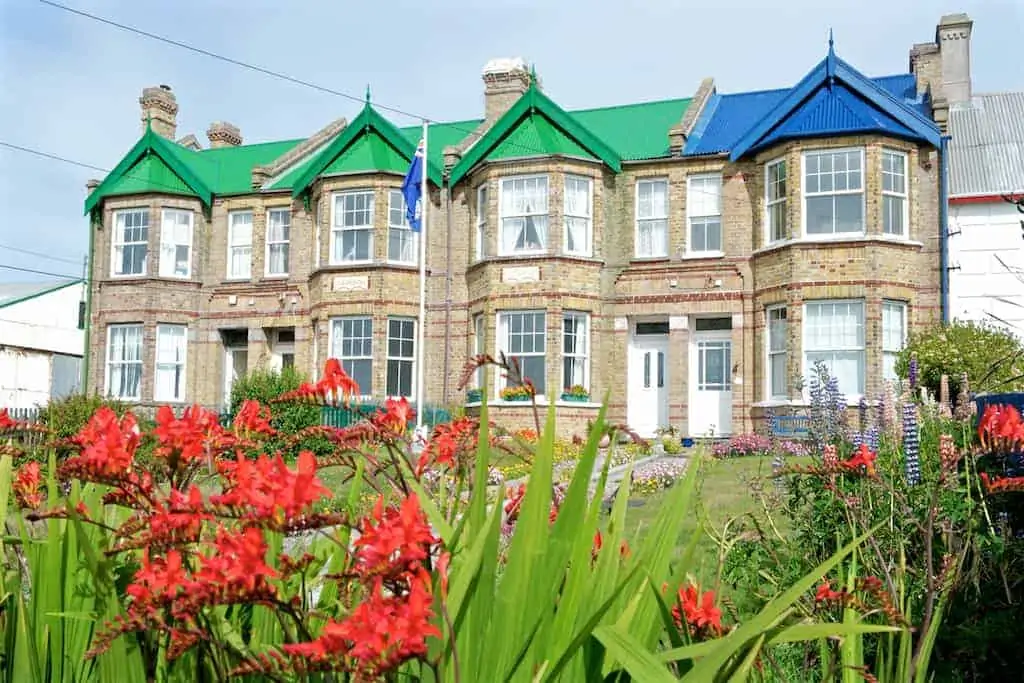
Over time, the Falklands have become stronger and more than self-sufficient.
Due to a large organic agriculture industry, the Falklands maintain their own economy with zero unemployment.
The wool production that once dominated the GDP, has now been replaced by the fishing industry.
However, the community is working diligently to create diverse forms of industry.
With plans to boost the production of fruits, vegetables, and meats as well as involvement with the production of oil and gas, the Falklands and its people are eager to continue the hard work that has been their foundation of their community.
Christ Church Cathedral
Probably the most notable visual attraction in Stanley is the Christ Church Cathedral on Ross Road.
It is the southernmost Anglican cathedral in the world, built in 1892.
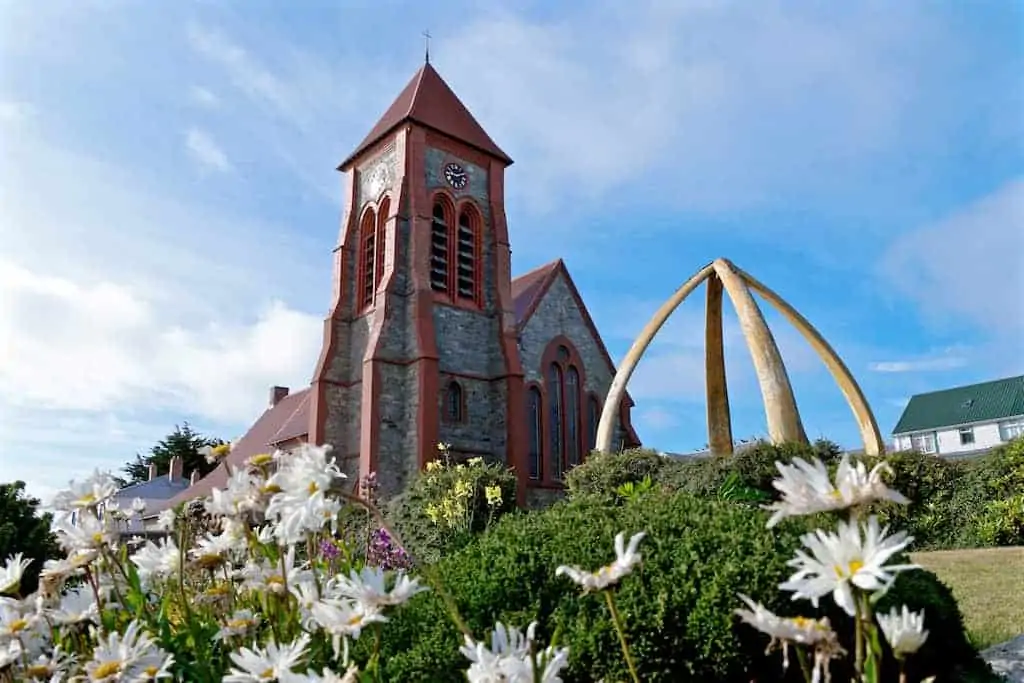
Quite simple by mainstream cathedral standards, it is still one of the most beautiful buildings in the Falklands.
Its modest steeple and shape may not be overly ornate, but the Shackleton Banner hangs inside and it shows off an unusual monument in the yard.
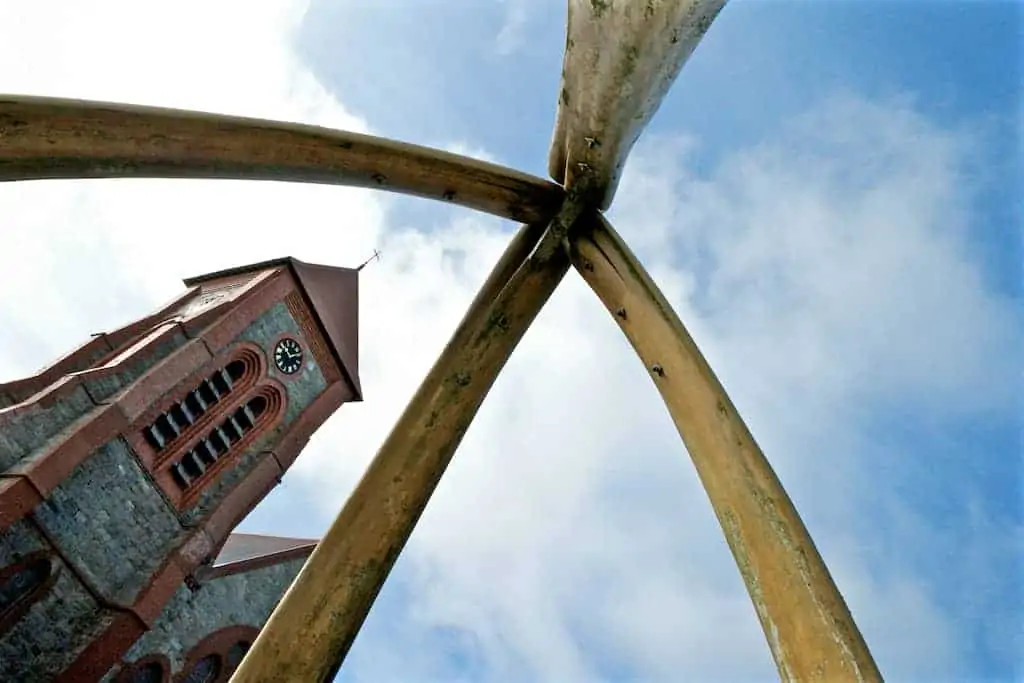
The prominent arch made from the jaws of two blue whales was erected in 1933 to commemorate 100 years of British rule, but today also reminds us of the once prominent whaling industry.
Falklands Historic Dock Museum
The Falklands Historic Dockyard Museum is a must-see for anyone interested in the history of the Falkland Islands. The Falkland Islands have been home to a whaling station, military barracks, and now a museum celebrating the islands’ rich maritime history.
The Falklands Historic Dock Museum is located in the capital city of Stanley and chronicles the human history of the Falkland Islands from the late 19th century to the present day. The museum is housed in a former shipyard and features a variety of exhibits on whaling, seal hunting, shipbuilding, and other aspects of life in the Falklands.
The museum also has an extensive collection of photographs, documents, and artifacts that tell the story of the islanders’ unique way of life. Visitors can see how the Islanders have lived and worked over the years, and learn about the important role that the dockyard has played in the development of the Falklands.
The museum also contains a wealth of information on the 1982 Falklands War, making it an essential stop for anyone wanting to understand this crucial period in Falklands history.
Falkland Islands Stone Runs
On East Falkland, just 20 km NW of Stanley, are a variety of fossils and geological formations with historical significance.
In fact, Charles Darwin travelled frequently to the Islands studying the geological findings which inspired his work on “Origin of Species.”
One of the most beautiful finds on the Falklands are the stone runs.
These land formations look like a sea of rocks, and it was caused during the first ice age from cycles of freezing and thawing.

The largest stone run in the Falkland Islands is known as the Princess Street, and it is almost a mile wide and about 2 miles long.
It is the biggest stone run of its kind in the world.
The formations on the Islands tell about its history, and prove that the Islands once existed on the east coast of South Africa!
The oldest rocks are almost a billion years old, and they are an important piece of geological history.
West Point, Falkland Islands
While the Islands are a place of serenity, it is the rare and untouched wildlife that is the main draw for many of the visitors.
The stunning coastline of West Point Island in particular is free of crowded developments and allows for up close interactions with marine life as well as the variety of birds and the immense flora and fauna that cover the islands.
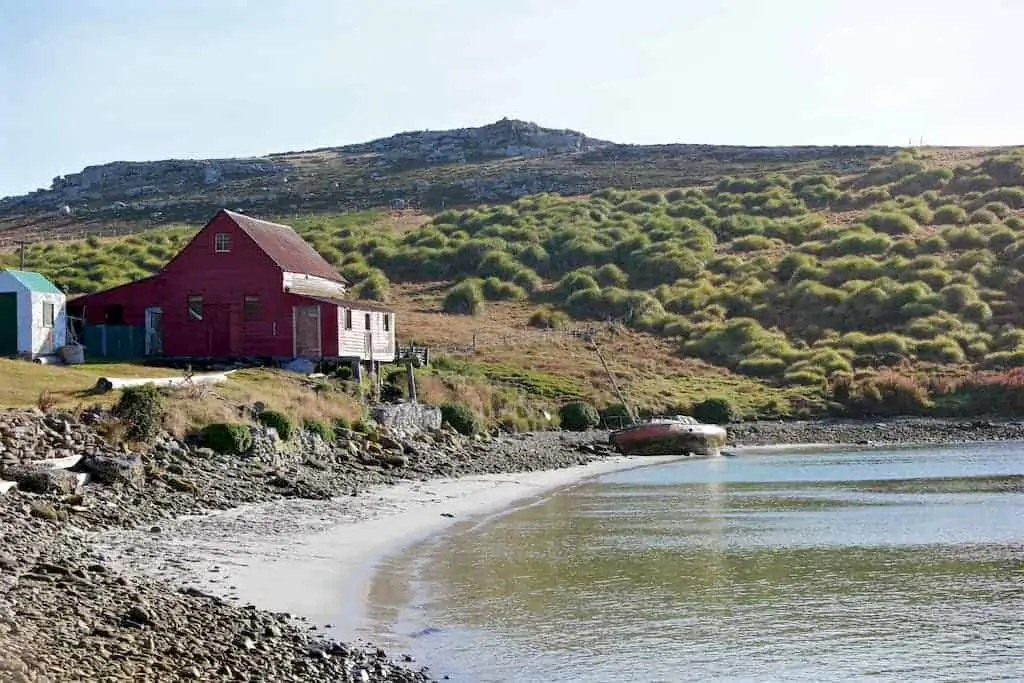
One of biggest wildlife attractions (literally!) are the pinniped marine mammals. The Falkland Islands have the largest southern elephant seals, sea lions, and walruses in the world!
Visitors can catch sight of these animals along the shores in addition to frequent orca whale sightings.
One of the largest islands is Carcass Island, home to a variety of wildlife, including penguins, seals, seabirds, and Enderby whaling station. Carcass Island was discovered in 1764 by John Byron, and it was eventually named after HMS Carcass, which surveyed the area in 1766.
Today, the island is a popular tourist destination, offering stunning views, wildlife watching opportunities, and hiking trails.
Falkland Islands Penguins
The Falkland Islands penguins are a favorite sight, as it is home to five different species of penguin – Rockhopper, Gentoo, King, Macaroni and Magellanic penguins.
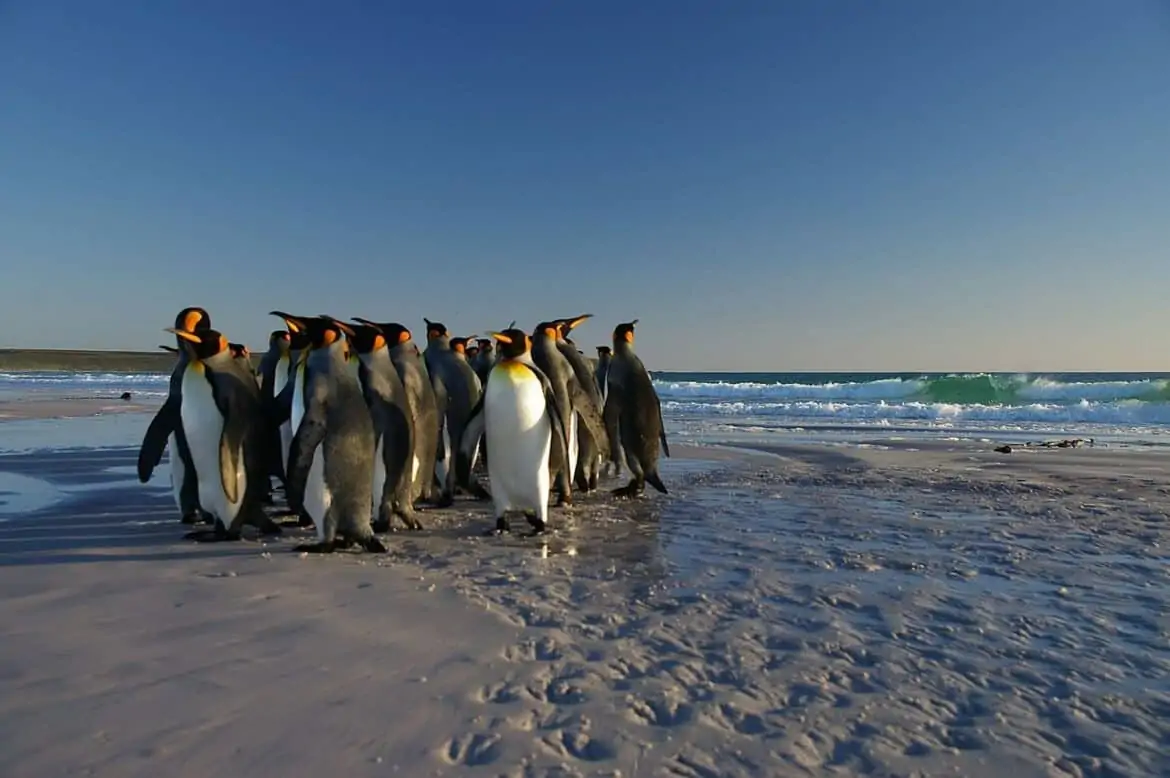
Of the five species, the endangered Rock Hopper penguin can be found nesting on West Point.
Similar looking to Macaroni penguins, southern rockhopper penguins also have feather plumes on their heads.
Instead of being orange, the feathers are instead yellow and black, shaped in a crest.
They have blood red eyes and are one of the world’s smallest penguins at just 50cm tall.

Rockhoppers mainly hang out and nest amongst the rocks and cliffs. But how do they get up there?
They actually propel themselves out of the water and land on the rocks with a big belly flop! It’s quite the sight to see.
The Falklands are the world’s most important site for these penguins whose existence is being threatened.
The Falkland Islands’ dedication to conservation has helped protect the Islands and keep them pristine and flourishing for future generations.
In the spirit of scientific research, the South Atlantic Environmental Research Institute was opened in 2012.
Based in the Falklands, it strives to conduct world class research in natural and physical sciences.
Working in the southern Atlantic ocean and extending into Antarctica, the SAERI is accepting research proposals, training students, and creating a research center that will explore the environmental science of the area.
Volunteer Point on East Falkland
The most notable attractions on East Falkland is the king penguin colony at Volunteer Point, the second-largest in the world.
The king penguins are the second largest species of penguin, and they are an impressive sight to behold.
The colony is located on a sandy beach surrounded by tussock grass, and it is one of the most accessible places where visitors can witness them up close.
Striated Caracara
You’ll also find plenty of Striated Caracara in the Falklands. A type of falcon, they are opportunistic feeders and will eat just about anything.
A favorite meal is baby penguins and you’ll also find them scavenging on the carcasses of dead animals.
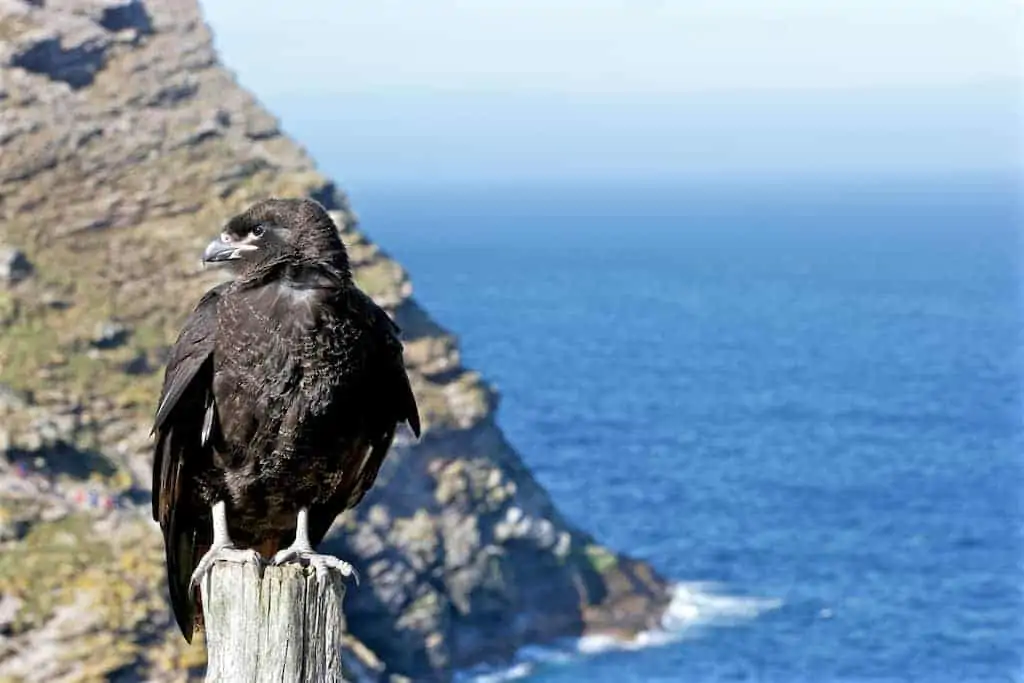
Striated Caracara has also been seen overturning rocks for food, which shows problem-solving skills as well as the ability to adapt. Clearly, they are considered to be very smart birds!
Fun Facts about the Striated Caracara
- Striated Caracaras were such a menace to local sheep farmers that they used to be intensively hunted in the Falklands. They are now protected by law and cannot be killed without permission from the Falkland Islands’ government.
- They are attracted to the color red and are known to steal red objects from visitors, like gloves and hats.
- Striated Caracaras are the southernmost found birds of prey in the world.
- They are one of the world’s rarest raptors, with less than 1,000 left in existence.
- They are very curious and aren’t very afraid of humans.
- Striated Caracaras can only be found on islands where there are also seals or seabird populations.
- Also known as the Johnny Rook.
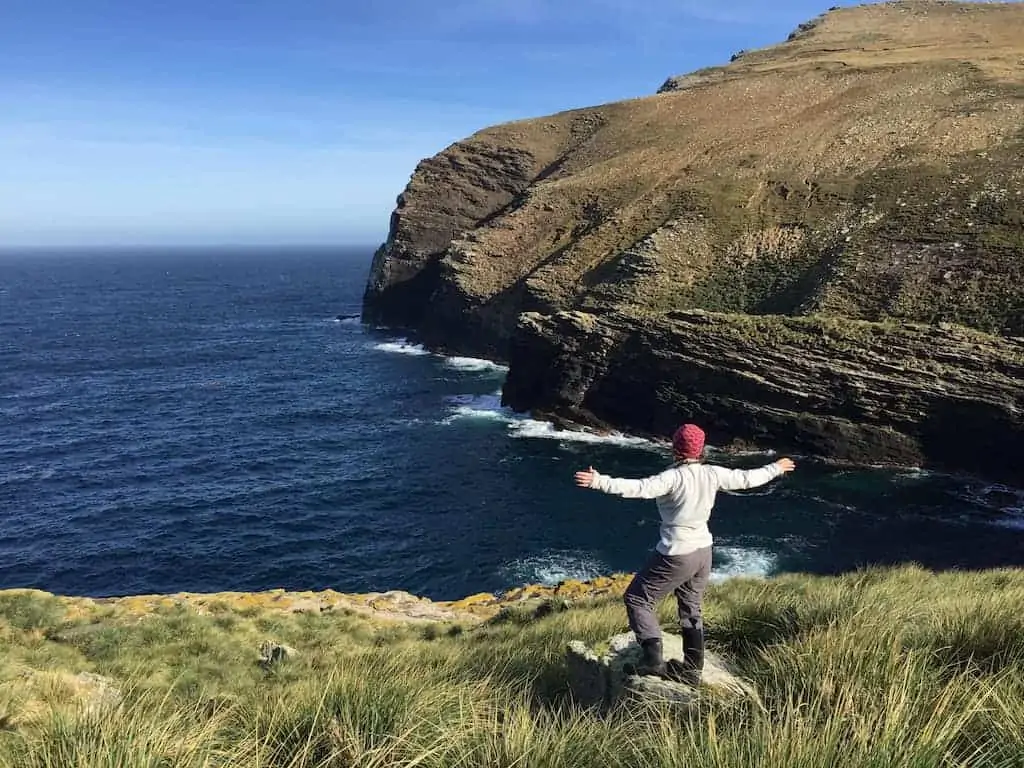
My visit to the Falkland Islands on the Antarctica, Audience with Kings 21 day cruise aboard the Sea Spirit was hosted by Chimu Adventures. All opinions remain my own.
What a great place for wildlife viewing. I bet there would be countless birds to see, depending the season.
I have never been here before and it would be so nice to take the whole family here for a quiet and relaxing vacation. The place is just so beautiful!
I love that most of the areas here are untouched. It will make you appreciate the place more, especially when you go outside and explore.
I have always wanted to visit the UK, especially around this area. The views are just amazing and it looks like a nice place to sit back and relax for a few.
The Falkland Islands look like a great place to visit. I Love the views and wildlife, so cool!